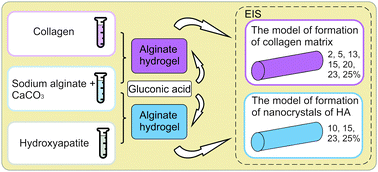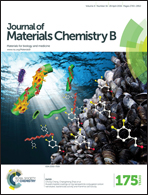Electrical impedance spectroscopy – a potential method for the study and monitoring of a bone critical-size defect healing process treated with bone tissue engineering and regenerative medicine approaches†
Abstract
The development of strategies of bone tissue engineering and regenerative medicine has been drawing considerable attention to treat bone critical-size defects (CSDs). Notably, new strategies and/or treatment approaches always require appropriate tools to track the healing process so as to evaluate their success. In this paper, we present the development of a novel approach for the non-invasive, yet real-time, monitoring and assessment of bone CSDs treated with biomaterials and biomedical approaches. For this, we employed the technique of electrical impedance spectroscopy (EIS) to quantitatively monitor and assess the changes in electrical impedance, and thus the regeneration process. In our in vitro tests, we examined the biochemical changes of the fracture area and investigated the influence of collagen and hydroxyapatite on the changes in electrical impedance by EIS, thus inferring the changes in bone regeneration and structure. Based on this success, we further demonstrated, in real time, the process of regeneration of the traumatic area in an in vivo rabbit model. Our electrical-impedance data of the experiment groups, i.e., the ones treated with natural coral and bone morphogenetic protein-2 (BMP-2), revealed that each group has its unique impedance graph characteristics, which are directly associated with the degree of regeneration. For comparison, we also employed radiography, gross anatomy, and histological analyses in examination. Our results illustrate that EIS holds considerable potential as a non-invasive tool for monitoring, in real time, the healing of bone CSDs by allowing for quantitatively characterizing the changes of both hydroxyapatite and collagen.


 Please wait while we load your content...
Please wait while we load your content...